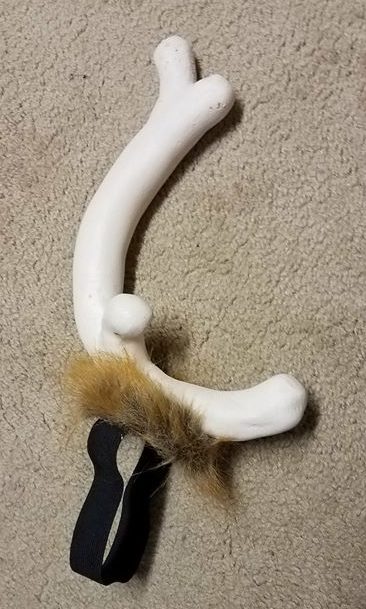3D printing is having an effect on the way things are made.
This episode talks about what those things are, how it benefits us all and how you can get involved.

Chris Dombos knows a thing or two about 3D printing, and he is also a massive FX nerd so we got on rather well. Having met him first at LA IMATS in Jan 2017 (I discovered he had some of the original Lost Boys moulds), it made sense to catch up when he came over to London recently. Of course, I figured bring the mic and make a podcast out of it.
We recorded in a cemetery in London, so there are background noises. The whole gamut of life - cars, sirens, passing people, kids, birds in the sky, aircraft, wind – it’s all there in a place of the dead. It's all background, our audio is clear and we chatted about a number of great topics which matter to anyone who makes things. This includes:
- There have been a number of auctions as big FX shops started scaling down! This means that the larger shops have all but disappeared but more smaller operations opening up.
- Props Store London https://propstore.com/
- Importance of design and the danger of generic, the process informing the look.
- Occulus Medium: https://www.oculus.com/medium/
- Cost of CAD programs - the free and the fortunes.
- Digital sculpting revealing an artists lack of anatomical understanding, and how an understanding of form is essential to good sculpture regardless of the medium – clay or pixels.
- Costs or materials v digital process. It exists as a process, will only get better.
- The increased incident of joined up thinking, and how digital FX uses a team to create what would have been the job of one person, teams fitting together. For practical FX this wider collaboration is a new thing.
We also mention some great artists. These include:
- Norman Cabreara https://www.instagram.com/norman_cabrera_monsters/
- Steve Wang https://www.instagram.com/stevewangcreaturecreator/
- Gio Nakpil http://gionakpil.com/
- Bill Corso https://www.stanwinstonschool.com/artists/special-effects-makeup-artist-bill-corso
- Digital Makeup Group - http://www.digitalmakeupgroup.com/
- Adam beane and 'CS Wax' http://www.adambeaneindustries.com/cx5/
- Landon Meier http://www.hyperflesh.com/
- Jose Fernandez and http://ironheadstudio.com/
Software and websites to help include:
- Modo https://www.foundry.com/products/modo
- Places to learn 3D Sculpting https://www.renderosity.com/ http://www.wings3d.com/
- Sculptris http://pixologic.com/sculptris/
- ZBrush Central http://www.zbrushcentral.com/
- ZBrush http://pixologic.com/zclassroom/
- ZBrush Core https://store.pixologic.com/zbrushcore/ who listened to sculptors to make the software work for sculpture.
- Mudbox (https://www.autodesk.com/products/mudbox/overview ), DigiPen https://www.digipen.edu/
- Gnomon https://www.gnomon.edu/
- Pluralsight (Formerly Digital Tutors) https://www.pluralsight.com/
- https://www.gentlegiantstudios.com/
- https://3dprinting.com/what-is-3d-printing/
- Reality Capture – photogrammetry software https://www.capturingreality.com/

Hope you enjoy this episode - It's exciting and scary at the same time for me.
Check us out on Facebook, https://www.facebook.com/stuartandtodd/ or email us direct at stuartandtodd@gmail.com!
- Stuart & Todd
This podcast was a lot of fun to do.
I met up with the Mekashes (Eryn and Mike) at their hotel as they were over for The Prosthetics Event here in the UK.
I was lucky enough to squeeze in a face to face interview and had a frankly wonderful time chatting with a couple of lovely people who also are amazing artists and FX nerds. Listen here, or on Apple Podcasts/iTunes. Soundcloud or whatever podcatcher you like to use.
Her credits include TV shows Glee, Nip/Tuck & Movies such as Flags of our Fathers, Letters from Iwo Jima, My Sisters Keeper. As per her IMDb bio:
Eryn Krueger Mekash has 30 years of television and film industry experience as a makeup artist and is diversified in beauty, makeup effects and design. Her credits cover a wide range of productions. Eryn started her career in the special makeup effects field in Los Angeles.
Eryn has won 6 Emmys and 6 Artisan awards and well as 29 Emmy Nominations for outstanding makeup, prosthetic and non-prosthetic. She is the department head for FX's anthology, American Horror Story (2011), and can still make a nice mold in a pinch.
Listen here, or on Apple Podcasts/iTunes. Soundcloud or whatever podcatcher you like to use. It's a hefty one, almost 2 hours so get stuck in!
We are also now on Spotify, so check us out there too!
We talk about the great book Leading Ladies of Makeup Effects in which Eryn features, being a department head for FX heavy shows like American Horror Story, how much fun Halloween is at Rick Bakers place and recreating The Lost Boys thirty years on using pieces from the original moulds.
Todd was printing a head of himself to make 'Chocolate Todds' so that's the sound you can hear in the background. Todd discusses the finishing up of his third edition to the well-known FX bible Special Makeup Effects for Stage And Screen! Hear all about the goodies in store there in the podcast.
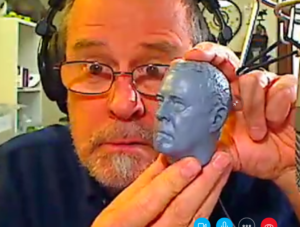
Incidentally, the antler in question which frankly I think looks like something which needs batteries is this: I think this looks suspect. Is it just me...?
WINNER!
The winner of the Steve Wang Sculpting Tool Set is Darren Pastor - well done fella. These will be on their way to you soon!
As ever, get in touch on our Facebook page, comment here or email us stuartandtodd@gmail.com.
My sincerest thanks for the Mekashes for giving up their time so generously and for all the beer and pudding!
Until next time!
---
Stuart & Todd
5 THINGS YOU'D LIKE TO KNOW (OR WOULD HAVE LIKED TO HAVE KNOWN) WHEN LEARNING PROSTHETIC MAKEUP
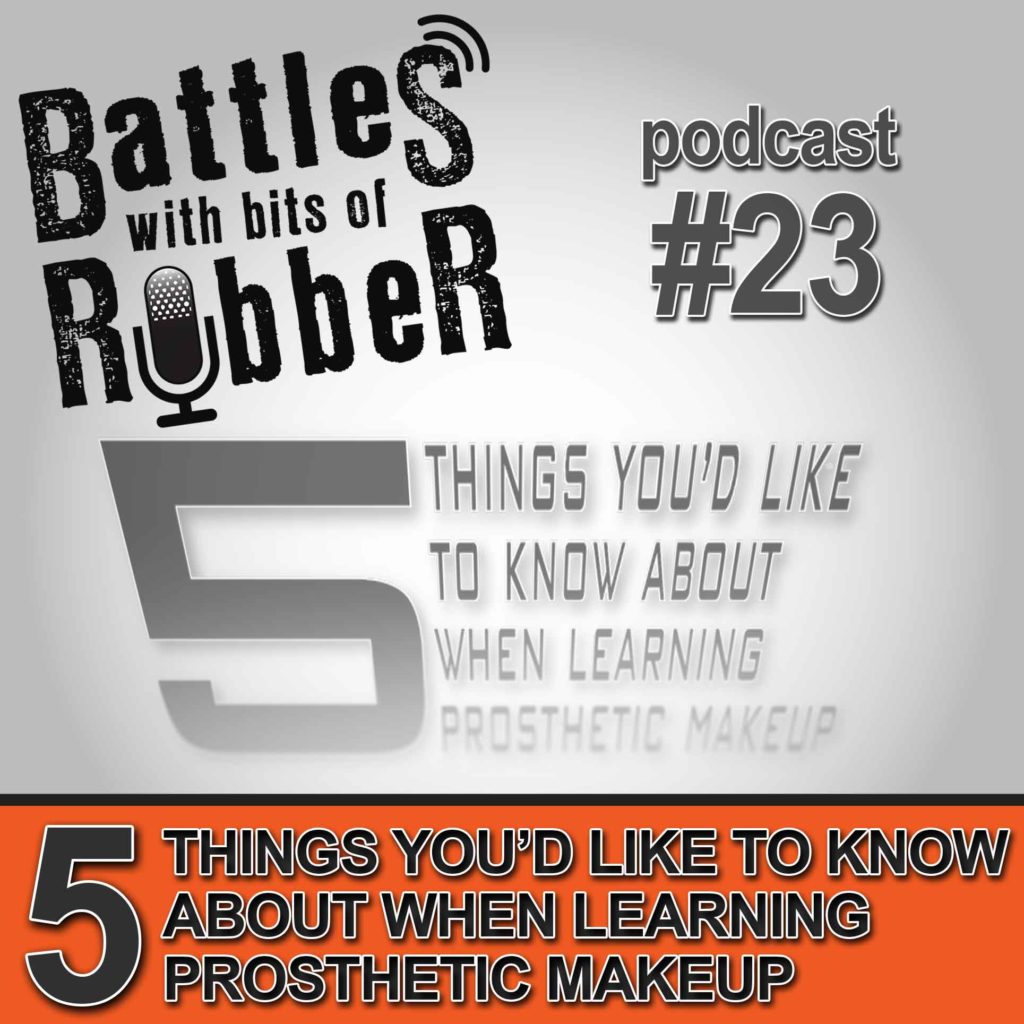
I'm still learning every day. I still make mistakes and I am still worried that every job I am about to start will go wrong. That feeling has never gone away and I suspect it never will. The trick is to get used to the sensation, understand that it isn't abnormal and to get on with the job anyway.
There are many things which often get taught again and again at makeup school, but along the way there are also things I noticed which are vital and yet which never seem to get the same level of spotlight.
In this podcast, Todd and I discuss 5 of the big ones which deserve looking at in some depth. We gave this subject as a talk at IMATS LA 2017, but this is a recording done recently (Nov 2017) so we're up to date and happy to hear your thoughts. Our email is stuartandtodd@gmail.com.
1. It's hard to be subtle.
2. There Are Other Important Qualities To Recreating Skin Other Than Shape and Colour.
3. Believe in primary colours
Check out our posts on use of colour Colour Theory In Practice and 7 Tips For Painting Skin Tones.
4. 90% of what you do won't get noticed (Hopefully)
5. Failure: when things don't go to plan, it's easy to beat yourself up thinking you're no good.
Feel free to get in touch on our facebook page or email us at stuartandtodd@gmail.com --- Til next time
Stuart & Todd
 Rob Burns makes great sculpting tools because he sculpts and knows what works.
Rob Burns makes great sculpting tools because he sculpts and knows what works.
Blog post for this episode with video:
http://www.learnmakeupeffects.com/rob-burns/
--------------------------------
It helps to know your tools, and in the podcast, he chats about how he started the company and how he paid his dues. We also chat with Mitch of Brick In The Yard again, and we talk about the proliferation of information in the hi-tech age and how having so much information on hand doesn't necessarily mean that it makes it into the brain.
Incidentally, this is what the tribble-like recorder looked like which we mention in the podcast:

Sculpting Tools Tools are something I have an unreasonable desire for, and I have far too many already but I'll be damned if that will stop me buying more. I have done a few posts on tools, manufacture tutorials and loop tool repair. This doesn't mean I don't buy tools as well - just because I know how to make a sandwich doesn't mean I don't go to Subway on occasion!

When I met with Rob at BITY, I had a play with the Steve Wang set, a signature set of tools designed in association with the master creature designer himself! I liked them so much I bought a set there and then for myself, and also got another set for a giveaway on the podcast. See the competition details below to enter!
Our email is stuartandtodd@gmail.com

Makeup Education Todd is busy with the newest edition of his book, and I have had a few cool jobs and loads of teaching spots which led me to reflect on the differences between the job and the education side of things.
There are a few recurring issues I see partly because I think people think 'makeup' sounds like an easy option and partly because academic frameworks don't necessarily make for a good approach to what is a vocational skill.
This being the case, we want to hear from anyone who is/was either a student or tutor in a makeup college/school/course and has a strong feeling either good or bad. What was your experience? What went well and what was pitiful? Did you find yourself surrounded with like-minded artistic souls or was it a difficult mixed group?
I've seen a lot of good thing and great tutors working hard to do right by their students, but sometimes any good they do is despite the system they find themselves in rather than because of it. Am I way off?
Let me know by emailing stuartandtodd@gmail.com It'll all be handled in confidence - I'm not interested in naming individual schools or people but I am interested in discussing the problem areas and what we can do to address them.
Check out Rob Burns and Cutting Edge Sculpture on Facebook, Instagram and the website.
Check out Prosthetics Magazine too, available as print or online subscription. This edition features a ton of amazing stuff, and we have part 2 of our latex tutorial - applying latex appliances.
Until next time!
Stuart & Todd
Allen Hopps is the director of Dark Hour, a huge haunt attraction in Plano, Texas.

I wanted to take a tour and chat with Allen about what it takes to keep people scared and the business of running a haunt all year round.
When people think about creating makeup effects, masks and prosthetics, its usually associated with film and TV shows. In the US, Halloween is pretty big and getting bigger every year.
I went for a tour of the huge show floor, and got to see behind the scenes where all the in-house stuff gets made - from sets, costumes, masks, prosthetics and props. The level of the thought and detail that goes into setting up a new show (there are several original new shows a year) is incredible. The team work year round updating and thinking up new ways to keep the screams coming.
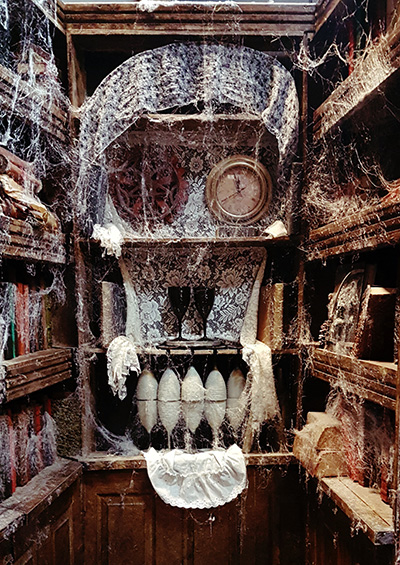
There are a few absolute wisdom bombs in this podcast episode which many makers would do well to listen to.
- If you've ever been guilty of having great ideas which seem to expand ever bigger, only to burst and fade away then this episode of the podcast is for you!
- If you've been trapped in a cycle of indecision, dithering and not wanting to grasp the nettle of your creative masterpieces then this episode is for you.
- If you think that movies are the ultimate end-game for creating creatures and masks and that if you can't make that coveted position then what's the point...? Then this episode is for you!
===================================
- Check out http://darkhourhauntedhouse.com/ to see what's on offer and I highly recommend Allen's YouTube channel, StiltbeastStudios.
- On Insta, check him on @allen_hopps.
- Dark Hour are on YouTube too: https://www.youtube.com/user/DarkHourPlano
Cap plastic is big....and it's not just for bald caps.
Cap plastic is so called as it was originally pretty much used only for making bald caps, so those with hair could temporarily be without it.
Over the last ten years or so, it's used much more widely as an encapsulant or barrier in a mould so that when silicone gel appliances are cast into it, they come out of the mould with that cap plastic as a surface. This allows glue and makeup to remain attached to it - after all, silicone is at its best a mould material because almost nothing sticks to it!
Chek out the blog post that supports this episode of the podcast.
OOOh, and if you enjoyed this then tell a friend, give us a shout out on social media or just say hi on our Facebook page! We love talking to you!
-Stuart & Todd.
This podcast episode is the belated accompaniment to the blog post.
We had a blast, learned some stuff and made some new friends. It was amazing, and I can't wait until IMATS London when I'll be back! Until then, please enjoy and get in touch with us at stuartandtodd@gmail.com and our facebook page.
Please also check out the breakdowns of the makeup demos, there is extensive behind the scenes info on the build of both makeup demos:
Thanks for listening!
---
Stuart & Todd
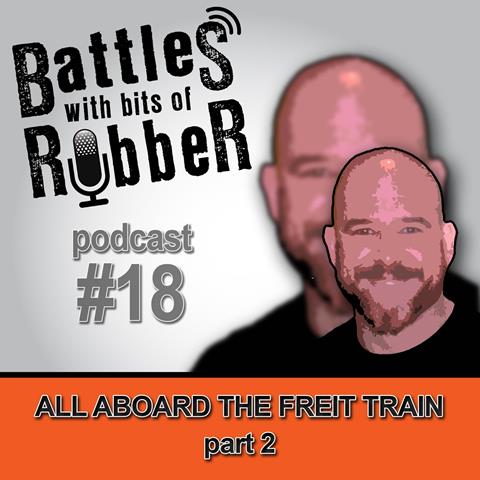 In part 2 of our discussion, Rob Freitas talks about the value of knowing about the unknowns.
In part 2 of our discussion, Rob Freitas talks about the value of knowing about the unknowns.
He sheds some light on the importance of knowing to look at what was before and honours great artists like Gil Liberto (http://www.imdb.com/name/nm0508847/) who does incredible work for the likes of at Joel Harlow (Star Trek, anyone?).
Check out this Vanity Fair article about the makeup work on Star Trek: http://www.vanityfair.com/hollywood/2017/02/star-trek-beyond-makeup.
The blog post for this one is here: http://www.learnmakeupeffects.com/all-aboard-the-freit-train-part-2/
When going to trade shows and being asked to speak, Rob likes to share what he has known but he is there to be fed knowledge as well as to feed others. He doesn’t want to be the subject - rather he cares about the craft and wants you to care too.
Thinking about provenance and what went before is a humbling way of uncovering the history of your subject matter, and is utterly fascinating. When you think about the makeups from the original Wizard Of Oz from 1939, the list of makeup crew reads like a who's who of the makeup industry - Jack Dawn, Max Factor, Cecil Holland, Robert Schiffer, William Tuttle, Charles Schram...
Two more names that pop up are the perhaps little know Josef Norin (http://www.imdb.com/name/nm0635364/?ref_=ttfc_fc_cr33) and his son Gustaf ('Gus') Norin (http://www.imdb.com/name/nm0635362/?ref_=ttfc_fc_cr32) who were Swiss artists who brought their talents over from a background in sculpting and moulding small moulds for jewellery. Gustaf was father of John and Robert Norin, both makeup artists with an impressive line-up of screen credits.
 Another aspect we touch on is how many of us working can count on the lack of distractions we had from the internet. Whilst it is fair to say that the internet brings untold knowledge to our fingertips, it also means we need to learn how to focus and channel what is important, rather than allow meaningless information to steal our time away. Social media makes people aware of what others may think of them or their beliefs…this wasn't something we grew up with in the pre-internet age. It is certainly shaping how people learn, and it's important to identify what really matters so one can harness that information and power into a tangible benefit rather than an endless distraction.
Another aspect we touch on is how many of us working can count on the lack of distractions we had from the internet. Whilst it is fair to say that the internet brings untold knowledge to our fingertips, it also means we need to learn how to focus and channel what is important, rather than allow meaningless information to steal our time away. Social media makes people aware of what others may think of them or their beliefs…this wasn't something we grew up with in the pre-internet age. It is certainly shaping how people learn, and it's important to identify what really matters so one can harness that information and power into a tangible benefit rather than an endless distraction.
Rob mentions a number of artists work, and links are provided below:
- Jason Barnetts' awesome documentary of Charlie Gemora: Genius Monkeyman. You can rent/buy to watch it here: https://vimeo.com/ondemand/charliegemorauncredited/153530263
- Gunnar Ferdinandsen (http://www.imdb.com/name/nm0272256/) Some of his credits include: • Ghostbusters • Total Recall • The Thing • Legend
- Wizard of Oz makeup artists: http://www.imdb.com/title/tt0032138/combined
- Gino Acevedo http://www.imdb.com/name/nm0009707/ https://vimeo.com/92782082
- Sergei Koudriautsev http://www.imdb.com/name/nm1165713/
Thanks again for checking this out! If you enjoyed this podcast, please support us if you can by:
- Sharing the podcast on Social Media
- Subscribing to the podcast on iTunes or Stitcher
- Review us to let others know it's worth their time!
Rob Freitas is one of the best-known mould makers in the industry and has a phenomenal reputation.
Not only is he incredibly skilled at making moulds but he has a passion for the provenance of the techniques which he uses and cares deeply to help interested parties understand so they can be better too.
He also will redirect much of the attention he gets to his predecessors and those peers whom he feels deserve more attention. It's a very generous attitude which I believe is born out of an unabashed passion for the subject and a desire to fan those flames in others.
It comes from a very pure place and it's not often you meet someone with that much knowledge, skill and wisdom and who also is phenomenally approachable and easy to talk to. He'll no doubt blush to read these words.
We hooked up at a pub near the Millennium FX in Aylesbury where he was teaching a class that week, and a few of us slunk off to the lobby of Rob's hotel to talk bronze age axe heads, seamlines and technology.
Full blog post here: http://www.learnmakeupeffects.com/all-aboard-the-freit-train-part-1/

Rob, me, Ivan Bellew and Nat Reynolds. Good times!
The audio is clear, but there is some background noise owing to the nature of a public space. It was around 10pm when we started and we kept at it until around 0130…that's how interesting it was. Just a magical few hours and I'm really pleased we could synch schedules to be able to sit down and talk.
In this first of two parts, we talk about
- Learning lessons through failure.
- The importance of looking at the past and knowing on whose shoulders we stand.
- Shortened timescales and managing expectations of people who seek to learn and gain skill (it is my belief the relatively short duration of courses as compared with time-served apprenticeships) can rob people of valuable lessons acquired through error and repetition).
- Caring about the right things in order to be better.
Axe Heads and Allies
The reason I brought that axe head was to show Rob the seams in it - evidence of moulds which have been used to make essential life sustaining tools and weapons. Moulds have been aroud for so long, and it gave me a bit of thrill to be able to have a modern day master mould maker touch a casting from an ancient mould and admire their handiwork 2500 years on.
(Incidentally, this estimation is based on a bit of research I did into bronze age artefacts. This particular head is a palstave, check out http://www.antiques-info.co.uk/new/pdf/July02/1.pdf).
 The
The
Videos
We mention a couple of videos that are on YouTube which show skills at work - hand making globes from 1955 (https://www.youtube.com/watch?v=4RWcWSN4HhI) and a Disney video explaining the different types of rivet (https://www.youtube.com/watch?v=IDbTUt3OG9s). This was something Disney did to help the war effort, when training many civilians to make military equipment like aircraft required detailed explanations of manufacturing processes such as these. How better to explain these intricate and involved processes than with an animation, condensing time and showing materials in cross section.
Look out for part 2 coming very soon, and subscribe to use on iTunes, Stitcher, iHeart Radio and Google Play Music to name but a few! Thanks,
Stuart

